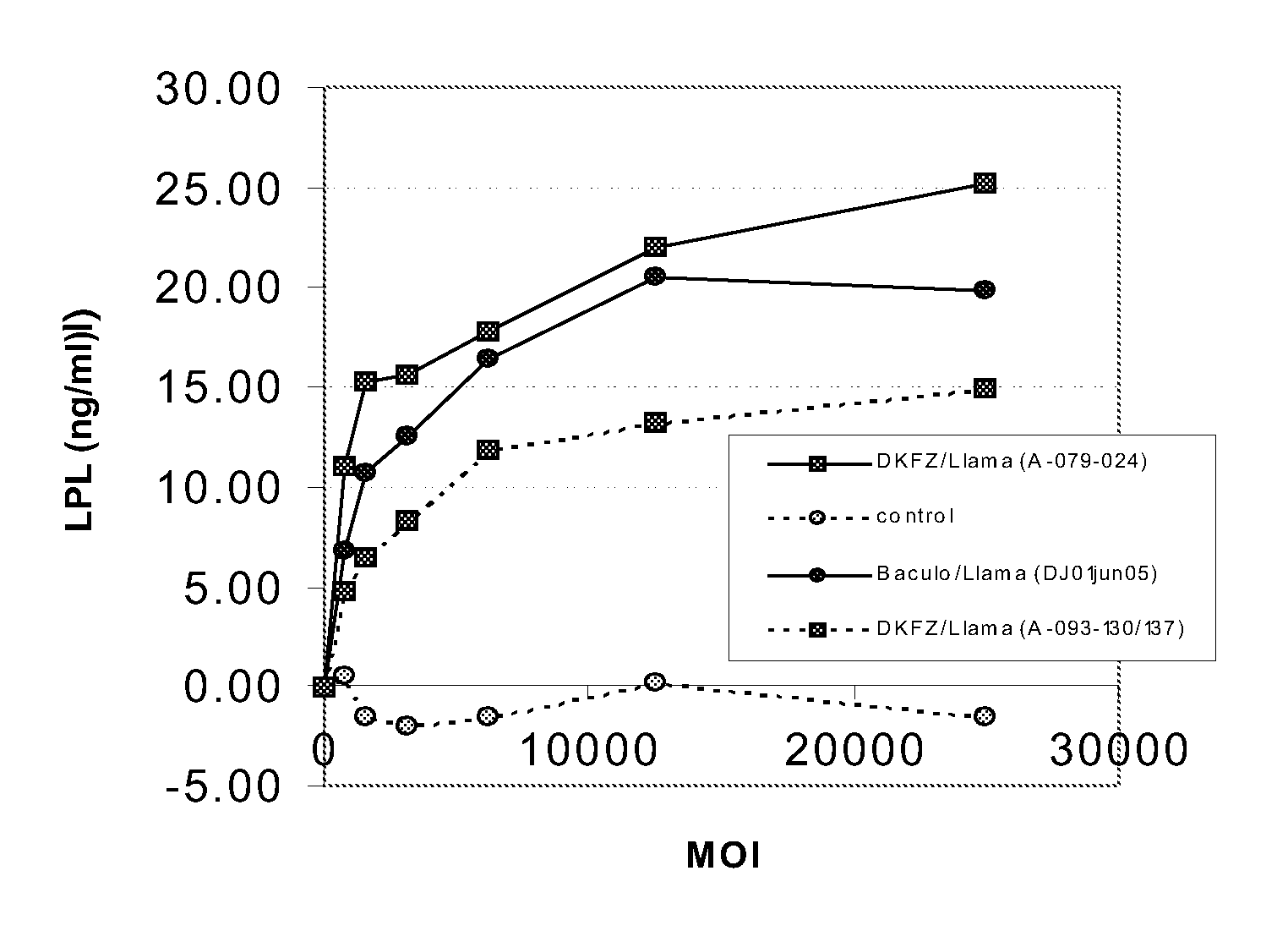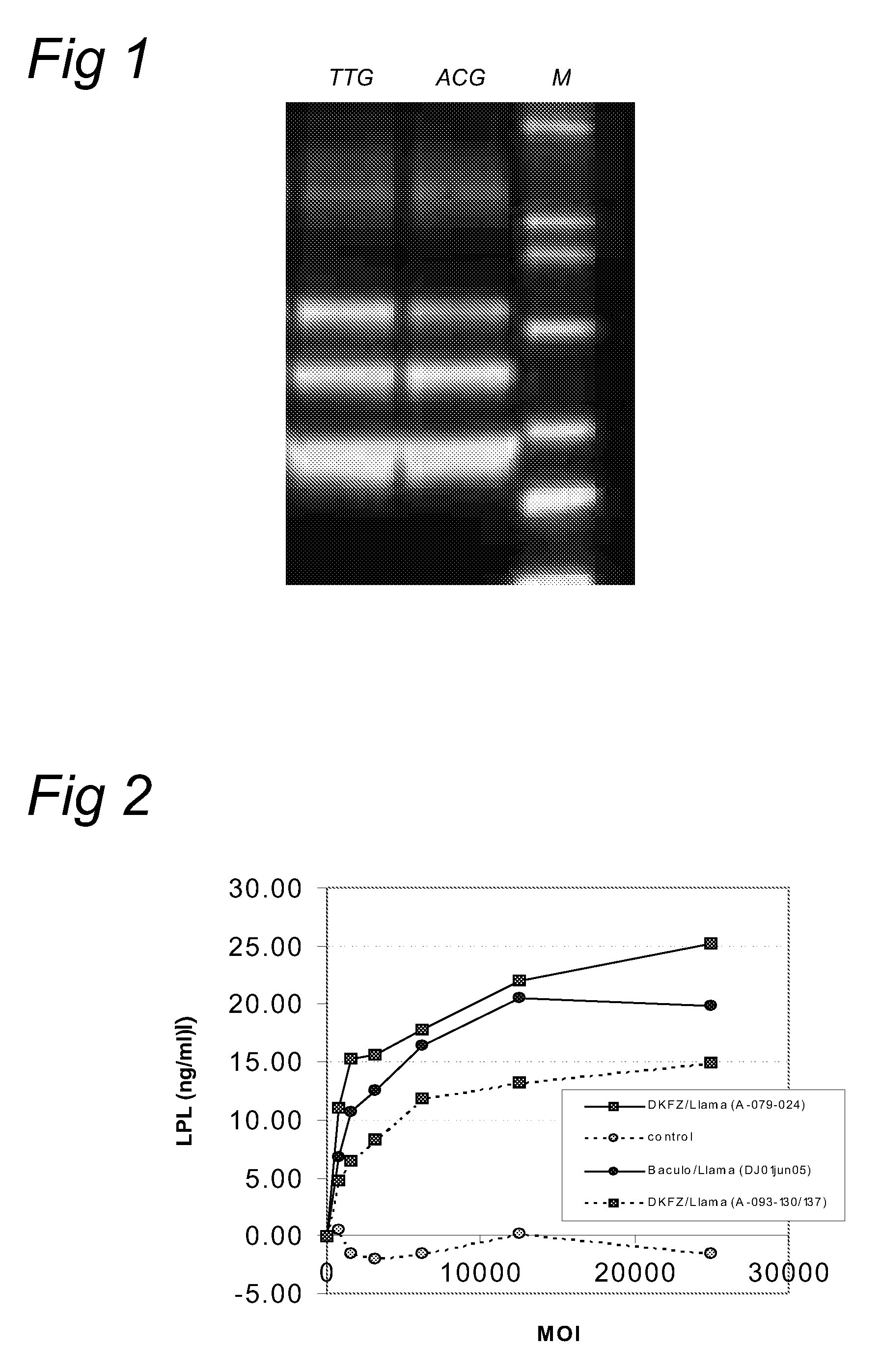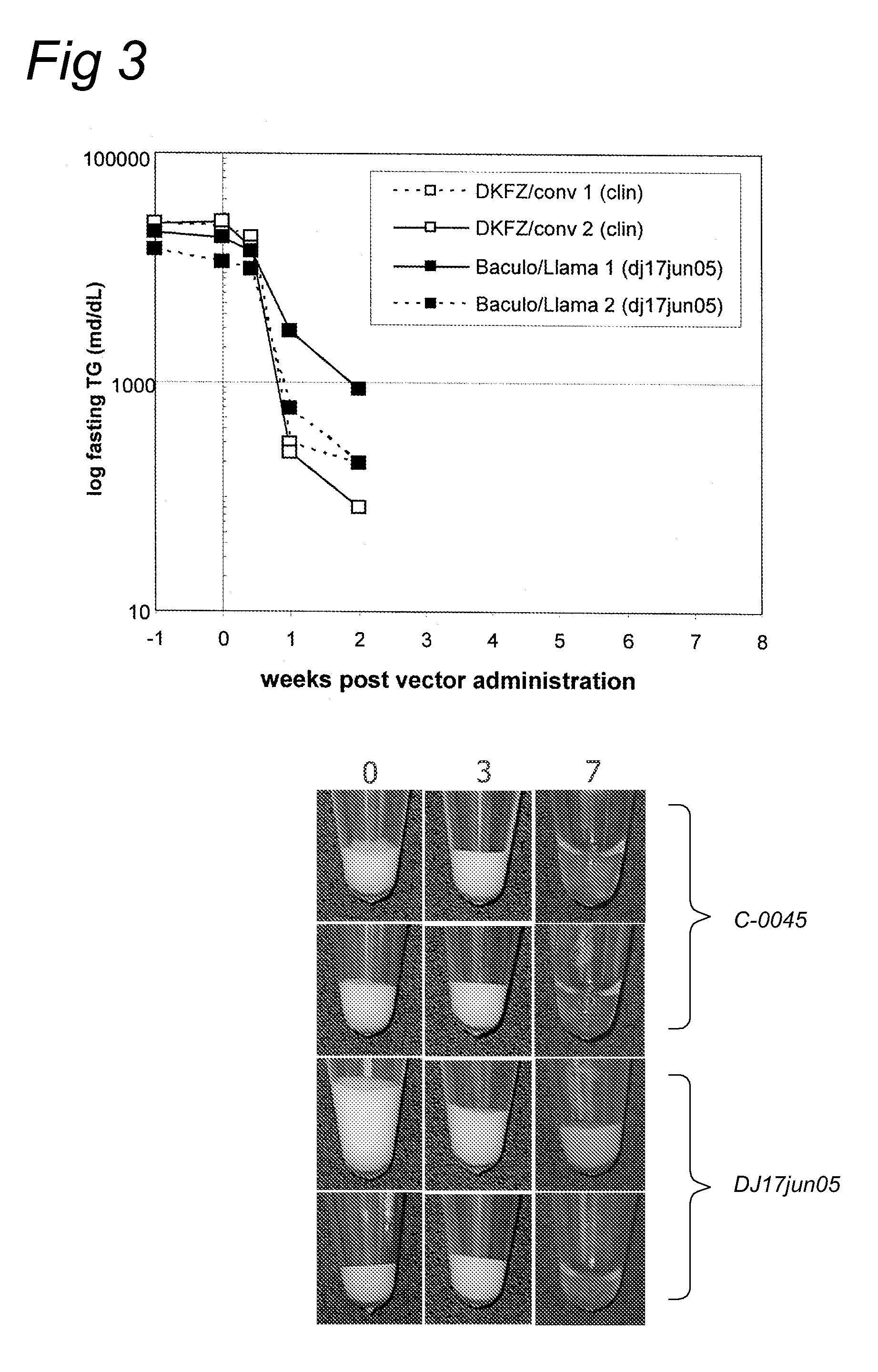Aav vectors produced in insect cells
- Summary
- Abstract
- Description
- Claims
- Application Information
AI Technical Summary
Benefits of technology
Problems solved by technology
Method used
Image
Examples
examples
1. Materials & Methods
1.1 Baculovirus Plasmid Construction
[0050]In order to express VP1,2,3 from a sole polycistronic messenger RNA, the baculovirus-AAV-Cap construct was designed as described by (Urabe et al., 2002, supra). Briefly, the ATG initiation codon of VP1 was mutated to ACG. A potential ATG initiation codon at position 11 has been changed to ACG. The splice acceptor site downstream of the VP1 initiation codon was destroyed (mutation at position 21 and 24). The mutated Cap expression cassette was cloned into a baculovirus expression construct; pFastBacDual (pFBDAAV1VPm11) with BamH1 / StuI restriction sites. This plasmid (pFBDAAV1VPm11) was the starting material for introduction of alternate initiation codons for VP1. The forward primer used by Urabe et al. (2002, supra) in order to introduce the mentioned mutations was:
BamHI 1 11 21 245′-cgcggatcctgttaagACGGCTGCCGACGGTTATCTACCCGATTGGCTC-3′(SEQ ID NO: 1)
The following forward primers were used to mak...
PUM
| Property | Measurement | Unit |
|---|---|---|
| Affinity | aaaaa | aaaaa |
Abstract
Description
Claims
Application Information
 Login to View More
Login to View More - R&D
- Intellectual Property
- Life Sciences
- Materials
- Tech Scout
- Unparalleled Data Quality
- Higher Quality Content
- 60% Fewer Hallucinations
Browse by: Latest US Patents, China's latest patents, Technical Efficacy Thesaurus, Application Domain, Technology Topic, Popular Technical Reports.
© 2025 PatSnap. All rights reserved.Legal|Privacy policy|Modern Slavery Act Transparency Statement|Sitemap|About US| Contact US: help@patsnap.com



